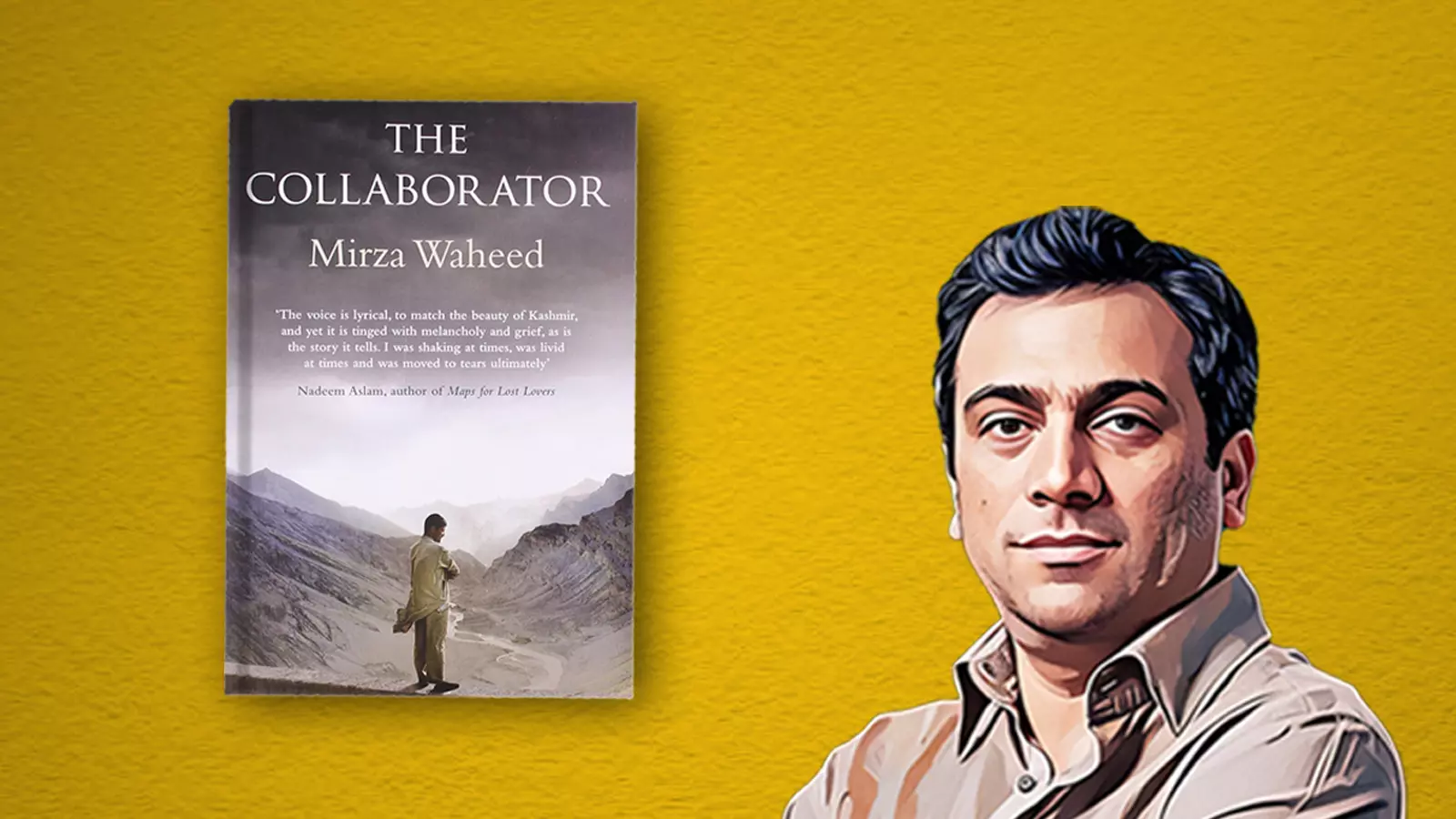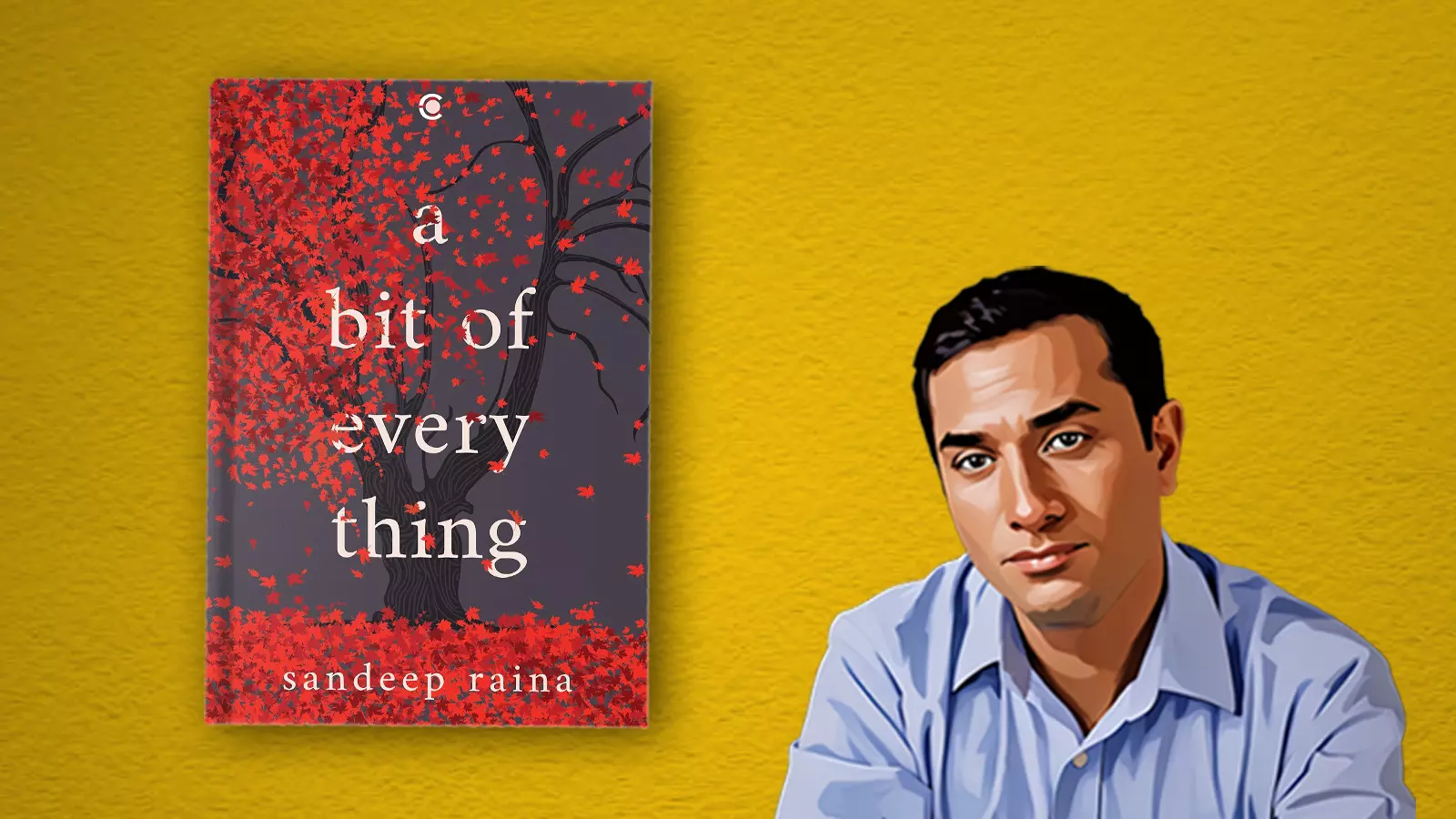
- Home
- India
- World
- Premium
- THE FEDERAL SPECIAL
- Analysis
- States
- Perspective
- Videos
- Sports
- Education
- Entertainment
- Elections
- Features
- Health
- Business
- Series
- In memoriam: Sheikh Mujibur Rahman
- Bishnoi's Men
- NEET TANGLE
- Economy Series
- Earth Day
- Kashmir’s Frozen Turbulence
- India@75
- The legend of Ramjanmabhoomi
- Liberalisation@30
- How to tame a dragon
- Celebrating biodiversity
- Farm Matters
- 50 days of solitude
- Bringing Migrants Home
- Budget 2020
- Jharkhand Votes
- The Federal Investigates
- The Federal Impact
- Vanishing Sand
- Gandhi @ 150
- Andhra Today
- Field report
- Operation Gulmarg
- Pandemic @1 Mn in India
- The Federal Year-End
- The Zero Year
- Science
- Brand studio
- Newsletter
- Elections 2024
- Events
Voters have spoken, but how fiction portrays the beauty and horror of Kashmir

“I look at the first few corpses and am immediately horrified at the prospects of what my first ever job entails. There are probably six of them ahead of me. Ugly grins, unbelievable, almost inhuman, postures and a grotesque intermingling of broken limbs make me dig my teeth deep, and hard, into my clenched fists. What an elaborate litter! There are bare wounds, holes dark and visceral,...
“I look at the first few corpses and am immediately horrified at the prospects of what my first ever job entails. There are probably six of them ahead of me. Ugly grins, unbelievable, almost inhuman, postures and a grotesque intermingling of broken limbs make me dig my teeth deep, and hard, into my clenched fists. What an elaborate litter! There are bare wounds, holes dark and visceral, and limbless, armless, even headless, torsos. A low moan struggles, screeches inside. Gradually, I approach one of the more intact bodies, gingerly, eyes reduced to hairline slits, and look for a pocket or bag amidst all the dirt and the crusted blood on his clothes. I find the ID card in his back pocket and in some kind of limp involuntary motion throw it into the nylon army rucksack the Captain gave me last week. It’s not easy, collecting identity cards and whatever else you can find on dead bodies.”
This is the voice of the first-person narrator, simply referred to as ‘the boy’, in Mirza Waheed’s The Collaborator (2011), which has been adapted into a film by Travis Hodgkins. Through the story of the young man whose life is carved into an impossible allegiance between survival and betrayal, The Collaborator gives voice to the unspeakable — the psychic violence of surviving, surrounded by endless loss, fractured lives and vanishing certainties.

The Collaborator has been adapted into a film by Travis Hodgkins.
The unnamed protagonist in a remote village on the Line of Control works under the command of an Indian army officer, Major Kadian. His job entails gathering the belongings of dead young men, many of whom are barely older than himself, who attempted to cross the border into Pakistan. Set during the insurgency, the novel is a nuanced exploration of identity under siege, which captures the dilemma of the protagonist trapped between his love for his homeland and the necessity of survival. Waheed’s raw, descriptive language evokes the desolation of the Valley, while simultaneously exploring the concept of “collaboration” as both survival and betrayal.
Waheed’s novel, along with powerful novels like Shahnaz Bashir’s The Half Mother, Shabir Ahmad Mir’s The Plague Upon Us, and Sandeep Raina’s A Bit of Everything, lays bare the contradictions of Kashmir: its beauty and violence, belonging and exile, hope and despair. These stories flow, much like the Jhelum River, are quiet and reflective, yet turbulent below the surface. They imbue Kashmir with a mythic, melancholic grandeur. In The Collaborator, the protagonist’s isolation symbolises the estrangement of the entire region, framed by breathtaking vistas.
“Gar firdaus, bar ruhe zamin ast/ hamin asto, hamin asto, hamin asto. (If there is paradise on this earth, / it is here, it is here, it is here…),” poet Amir Khusrau famously wrote about Kashmir. But in the fiction set in Kashmir, often by writers from the region, it is also a site of unimaginable violence. Here, the lives of those who stay behind are burdened with memories, muted rage, and love bound to a tormented homeland. These writers illuminate the impact of years of conflict on lives, identities, and an abiding connection to a land that remembers everything, from the first shots fired to every last echo of lost innocence. They are about histories that hang like mist over the valley. Kashmir in these works of fiction is rarely a straightforward landscape; it is layered with its people’s memories, the weight of conflict, and complex emotional resonances. Every act of survival feels tinged with complicity, friends vanish into thin air, and mothers are left to walk the lonely paths between prisons, hospitals, and unmarked graves.
In a similar vein, The Half Mother (2014) introduces the reader to Haleema, whose life is upended by the disappearance of her teenage son Imran. Set in the 1990s, it foregrounds the experience of women — specifically those left in in a purgatorial state of waiting, in limbo as 'half-widows' — a term unique to Kashmiri vocabulary that speaks to the inconclusiveness of loss, the torment of not knowing, the ache of unresolved grief. Bashir’s protagonist, Haleema, is a receptacle of this suffering; it’s a reality shared by many Kashmiri families.

Set in the 1990s, The Half Mother foregrounds the experience of women — specifically those left in in a purgatorial state of waiting, in limbo as 'half-widows'.
Bashir’s work takes readers into the intimate, anguished spaces of Kashmiri homes, where personal loss collides with political oppression, portraying the agony of mothers who are forced to become symbols of resistance while bearing the grief of uncertainty. His novel reveals the emotional toll of living in a place where justice is elusive, and hope, though fragile, is a solitary companion. Haleema’s journey reflects the ordeal of countless Kashmiri mothers whose lives remain defined by their losses, their homes laden with unanswerable questions, their lives like abandoned landscapes filled with echoes.
Raina’s A Bit of Everything (2020) treats Kashmir’s history with sensitivity; it dwells on the displaced lives of Kashmiri Pandits, the community that, faced with threats and violence, was compelled to leave its homeland.

Sandeep Raina’s A Bit of Everything dwells on the displaced lives of Kashmiri Pandits, the community that, faced with threats and violence, was compelled to leave its homeland.
Raina tells the story of Rahul, a Pandit whose heart, after years in Delhi and then in England, aches with the longing for Kashmir. His story juxtaposes the tenderness of homeland with the brutality that forced him to abandon it. Rahul’s alienation in England mirrors the psychological exile felt by Kashmiris in their homeland, caught between identities — neither fully belonging to the diaspora nor to Kashmir as it exists today. Raina portrays Rahul’s struggles to find peace, a journey of profound disquiet, with a deft touch.
In The Plague Upon Us (2020), Shabir Ahmad Mir brings to light the suffocating atmosphere of mistrust, the haunting omnipresence of suspicion, and the insidious way it divides even the most cohesive communities. His protagonist, Oubaid, grapples with the shifting identities of his friends and family, as the plague of violence and insurgency claws its way into their lives.

In The Plague Upon Us (2020), Shabir Ahmad Mir brings to light the suffocating atmosphere of mistrust, the haunting omnipresence of suspicion, and the insidious way it divides even the most cohesive communities.
Oubaid’s inner conflict after he witnesses friends succumbing to the pull of militancy serves as an incisive examination of how insurgency infects the very essence of those who live amidst its constant threat. Mir, with his keen awareness of Kashmir’s undercurrents, portrays this ‘plague’ with brutal honesty, exposing how a community is splintered by suspicion. Mir’s prose is tense, an unflinching look at a reality so harrowing it borders on the surreal, yet is heartbreakingly real for those who live it.
Each of these novels does more than recount tales of personal tragedy; they are portraits of a region that continues to endure the ravages of unending strife. In these novels, Kashmir is more than just a setting; it’s a character itself — a breathing and bleeding entity steeped in the dichotomy of beauty and horror; perpetually bruised but defiantly beautiful. In The Collaborator, Waheed’s prose gives the sense of an open wound, the valley’s wounds as fresh as the conflicts it has endured. It lends the valley a sort of melancholic majesty, an uneasy serenity that only those who have lived through conflict can understand.
